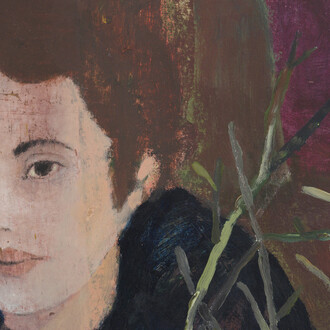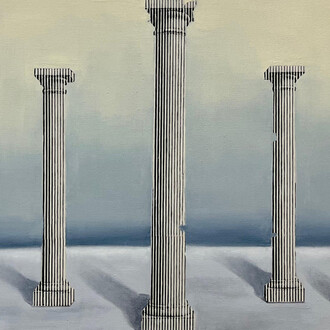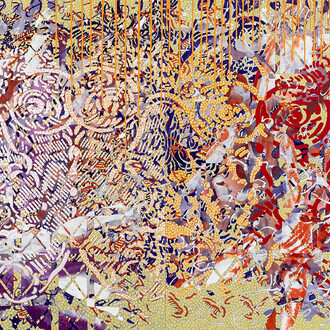Notions of time is a deeply layered and intricate exhibition. The sculptures are not only physical pieces of art, they also seem to encapsulate complex narratives and symbolic connections to history, heritage, and with the environment.
The use of stone heads carved from various materials—such as opal, serpentine, and marble— symbolizes the weight and permanence of heritage and ancestral memory. These stones, each with a different texture, color, and history, serve as powerful metaphors for the diversity and depth of cultural identities. By incorporating tribal marks, the sculptures tap into the notion of personal and collective identity, connecting past rituals with present times.
The outdated rotary phones seem to serve as a powerful commentary on communication and the historical shifts in how we connect to each other—mirroring Zimbabwe's transformation from Rhodesia to independence. The rotary phones, once symbols of modernity, now stand as relics of the past, adding a layer of nostalgia and disconnection. In conjunction with the stone heads, the phones could signify the complex relationship between tradition and modernity, or even the tension between technological progress and cultural preservation.
Moreover, internet cables, copper, brass, Cowrie Shells, copper, brass Springstone, bullet shell, jeweller, hard plastic, red jasper stone Ancient people regarded the stone Red Jasper, as a sacred stone of physical and spiritual protection—a natural healing stone that amounts to courage and wisdom. Therefore, Red Jasper was once a talisman of warriors and carried as a source of protection. and aluminum metals being integrated into the sculptures might represent the intrusion of globalization and industrialization into spaces once governed by simpler, more organic technologies and lifestyles. These materials could symbolize the growing disconnect between nature and technology, as well as the universal reach of capitalism—one that impacts both the environment and traditional ways of life.
The silk tapestry with its metaphor of "a blanket of inheritance" evokes a sense of legacy—how the past, with its gifts (both physical and cultural), envelops the present generation. The metaphor of inheritance suggests that this overwhelming and often unforeseen legacy brings with it both responsibility and burden, much like the sculptures themselves stand solidly, "always visible, but out of reach."
Lastly, the use of vintage water meter readers as part of smaller sculptures, anchored on marble stone bases, seems to introduce an element of domesticity and everyday life into the narrative of global ecological and technological changes. These everyday objects, once part of routine life, are transformed into symbolic pieces of art that prompt reflection on how even the most mundane aspects of life are shaped by personal the broader forces of history, industry, and global change.
The arrangement of these works as a collective installation, where each sculpture stands individually yet contributes to the whole, mirrors the concept of interconnectedness. Each piece represents an individual moment in time but, together, they form a complete narrative that explores the intersection of history, cultural heritage, and technological evolution.
theme sparking reflection on the tension between past and present, the fleeting nature of technology, and the lasting impact of heritage.
(Text by Terrence Musekiwa)















